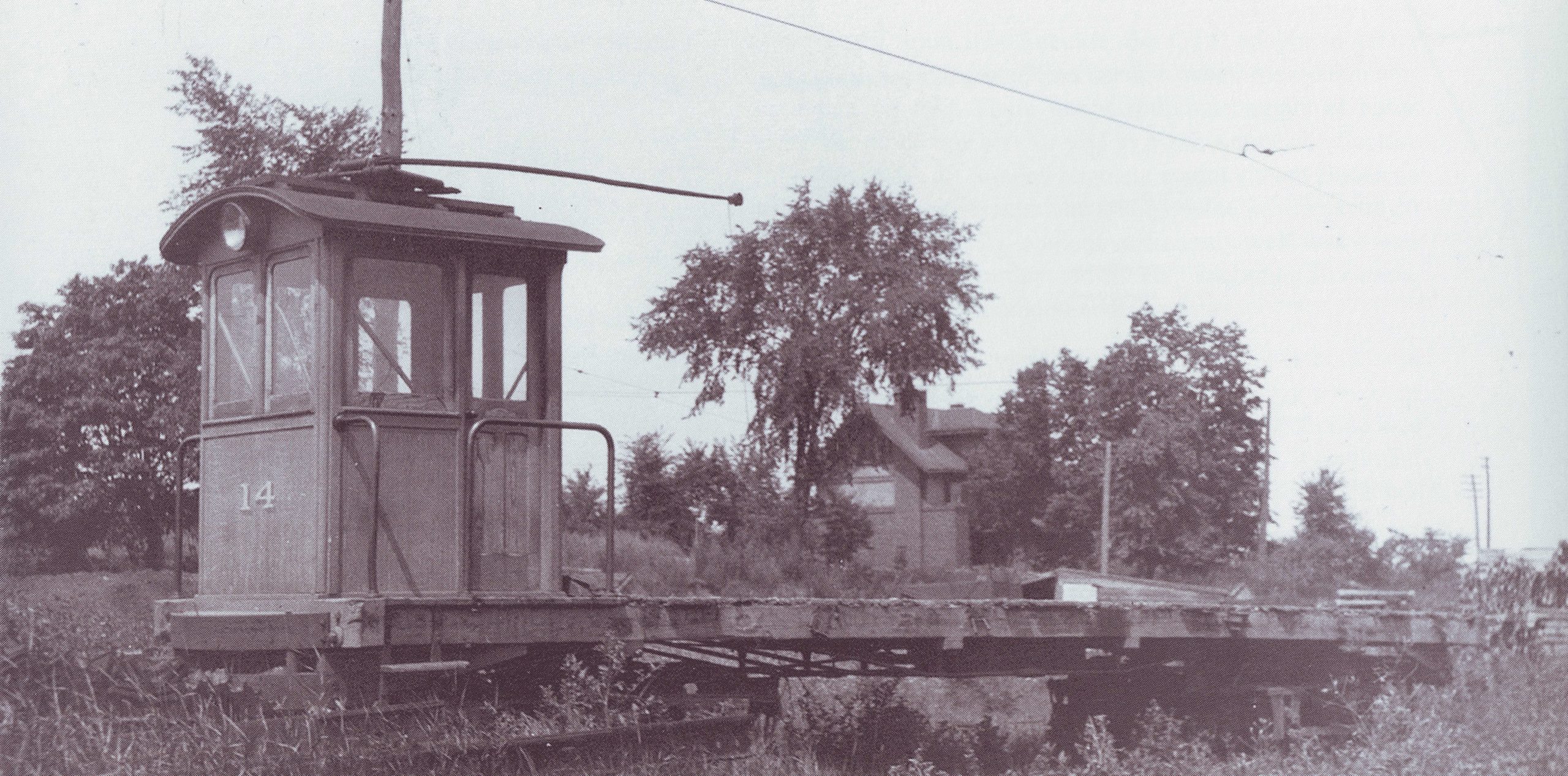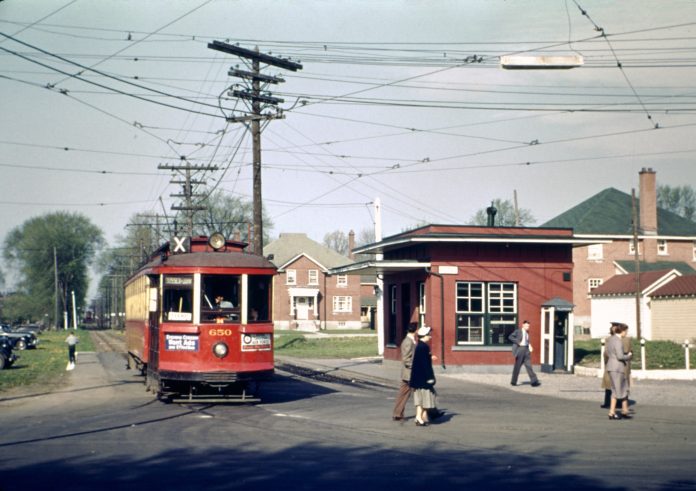By Dave Allston
The intersection of Holland and Byron was for many years known as “Holland Junction,” a name that harkens back to an era when railway tracks were the area’s prominent feature.
Holland Avenue itself had tracks running almost its entire length, from Wellington to Carling. It was crossed by the Grand Trunk line, today’s Queensway, and the Canadian Pacific Railway line, today’s Transitway.
As a new century began in 1900, a new Ottawa Electric Railway streetcar line running off Holland began to bring Ottawa residents through Wellington Village, Westboro and Woodroffe, all the way out to Britannia.
Back then the line was in the middle of nowhere, connecting to tracks that ran from downtown, through Hintonburg and up Holland to West End Park. Byron Avenue didn’t even exist — the tracks ran through former farmland. Farmers and landowners along the route saw their land values explode thanks to the streetcars.
In 1908, the Ottawa Electric acquired lots along the streetcar line, including 26 of them around where Huron and Holland meet Byron.
The idea was to establish a large storage yard for materials, equipment and broken down streetcars, and a small waiting station for those transferring in what was countryside at Holland Junction onto the Britannia line.
This yard took up nearly two-thirds of the entire block of the east and west sides of Huron, between Wellington and Byron. It went north to the heritage Connors House at 166 Huron, built in 1915.
The yard was fenced, with a long line of billboards on the Holland side through the 1920s and 1930s.
In those early days, the only street lighting around the streetcar line was supplied by the Ottawa Electric. When the streetcars stopped running just after midnight, the lights at Byron and Holland, and Byron at Clarendon, were turned off. It was so dark and dangerous that the City eventually installed its own lighting.

In 1934, the City made an agreement with the Ottawa Electric to relocate a city yard to the Huron-Byron yard. So the City yard at the southeast corner of Wellington and Hinton had to move. The City began storing stacks of wood, materials, equipment and tools there, and did work that created smoke, dust and noise. Neighbours complained, and it became a community issue.
The problem was solved in 1942, when the Ottawa Electric decided to move, the City followed suit, consolidating their three area yards to Bayview.
Before the Holland Junction yard closed, it was a hub for a City project to distribute sand across the city, to use in case fires were started by air raids. In June 1942, the City asked principals at all Ottawa schools to urge teenage boys to distribute the sand. Trucks delivered the sand to hubs across the city, where boys brought galvanized pails to sand hubs across the city for homes in their neighbourhoods.
It started on June 16, between 6 and 8 p.m. and most teenaged boys in Wellington Village pitched in, to be rewarded with soft drinks.
In early 1947, the province changed building restrictions so the Collegiate Institute Board could build Fisher Park School. Three lots at the corner of Byron and Holland (now the Elmdale Tennis Club) became a centre of debate, because the Agudath Israel congregation had bought the lots for a new synagogue and school.
Ottawa Electric had sold the lots, not knowing the Collegiate board had included them as part of the Fisher Park project. The city began expropriation procedures to claim the lots.
Agudath Israel was willing to go along with all this as long as an equivalent site for the synagogue could be found. A deal was struck, and the Board purchased the lots. Elmdale Tennis Club – which opened in 1937 on land where Fisher school stands today – moved onto the lots in 1948, where they remain.
The Agudath congregation eventually moved into the old church at 30 Rosemount.
In 1948, a $6 million deal saw the City acquire Ottawa Electric. At the stroke of midnight on Aug. 13, the streetcar system – with 130 streetcars, 61 buses, miles of track, barns, garages, power plant and other equipment – became the Ottawa Transportation Commission.
In anticipation of this, the Ottawa Electric had been selling off their pieces of land in the vicinity. The former Holland Junction yard was sold to various buyers, but a large block of nine lots (five on Holland, four on Huron), were sold to local builder Aurele J. Henry.
The A.J. Henry Co. was a family-run business, building houses just a couple at a time. Between mid-1948 and mid-1950, its focus was on the south end of Huron and Holland, where Henry built nine identical two-storey brick duplex homes, all of which still stand. Each cost between $13,000 and $15,000 to build, and are identifiable because of their adjoining central front entranceways, and the fun geometric shapes built into the brick above the entrance.
The streetcars stopped running in May 1959, and the waiting station was demolished soon after. Then mayor Charlotte Whitton wanted most of the former streetcar line lots sold for houses, but thankfully the City retained it for park and green space – a pretty cool memorial to our neighbourhood’s streetcar history.
